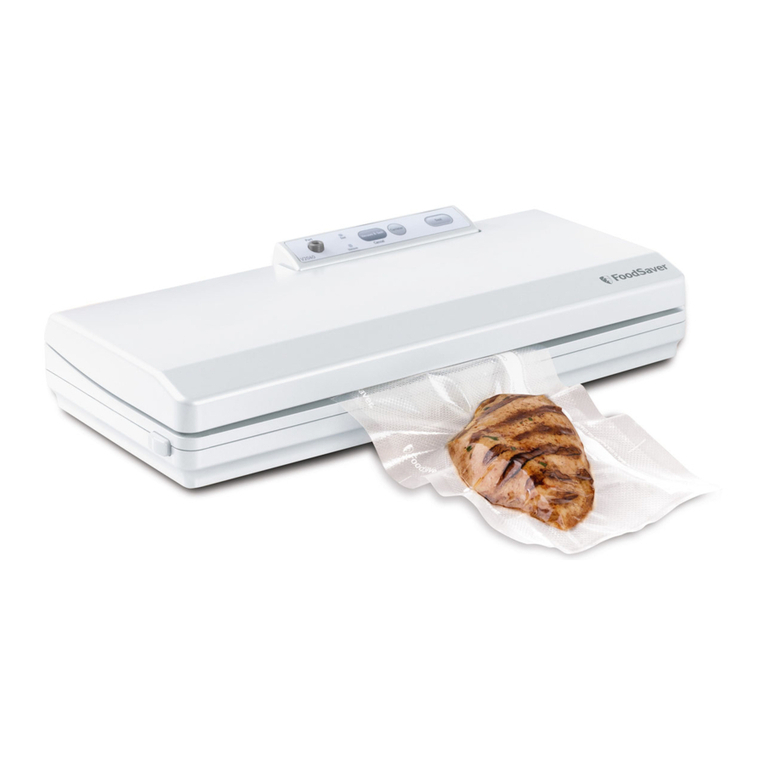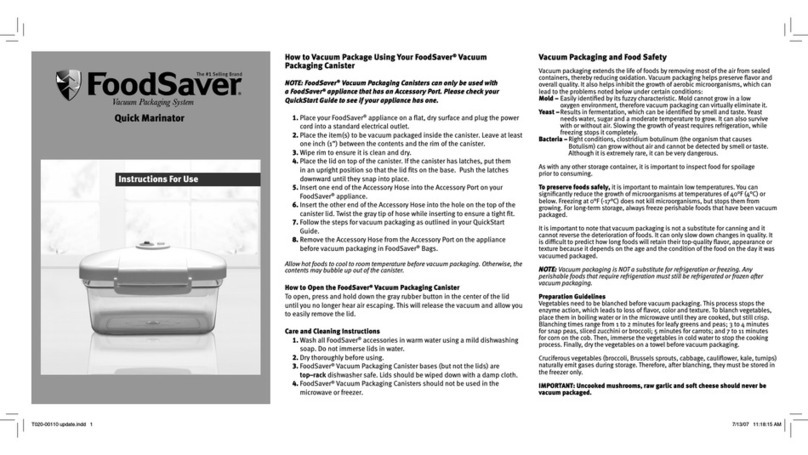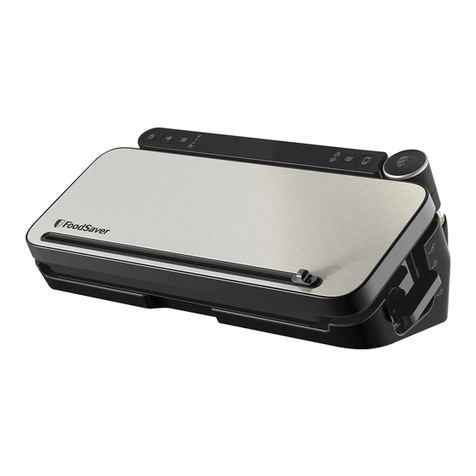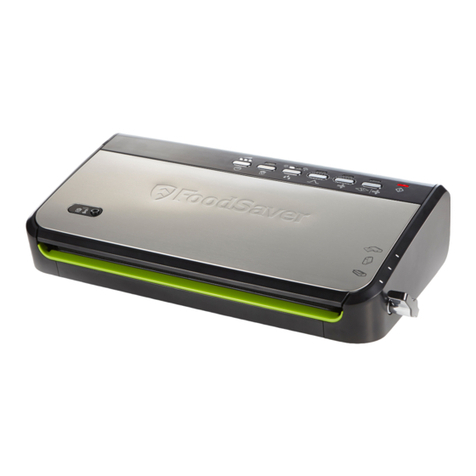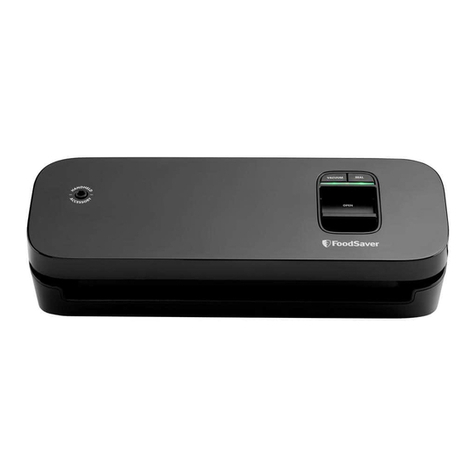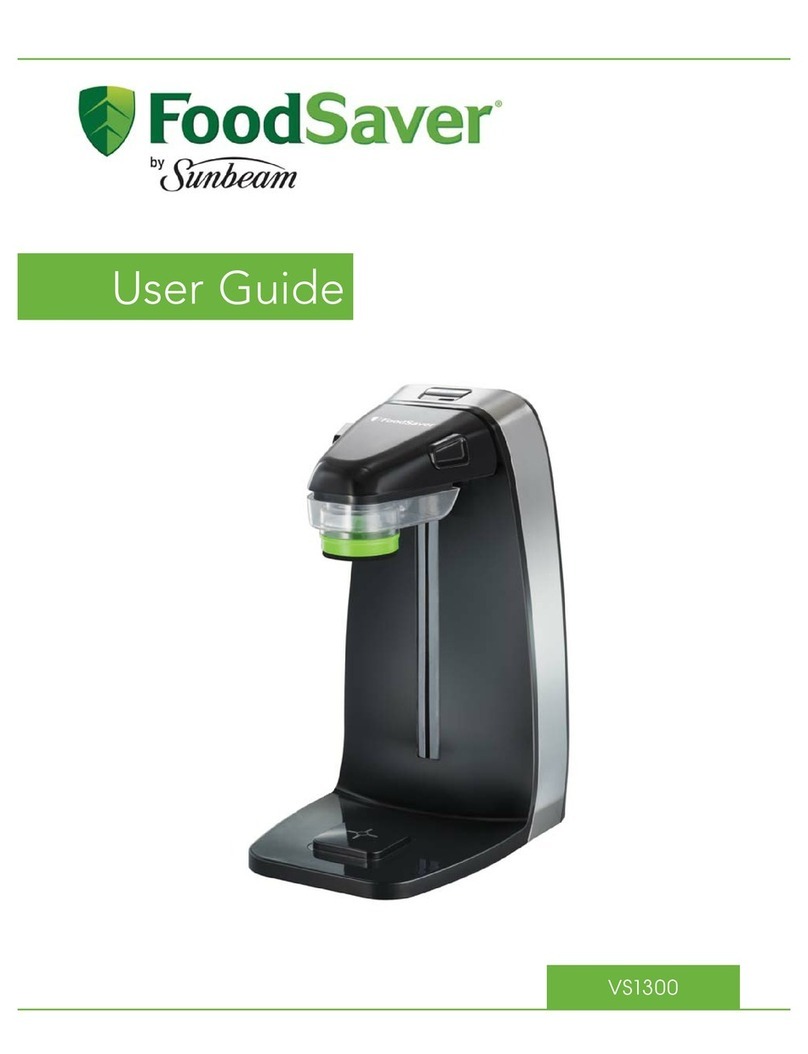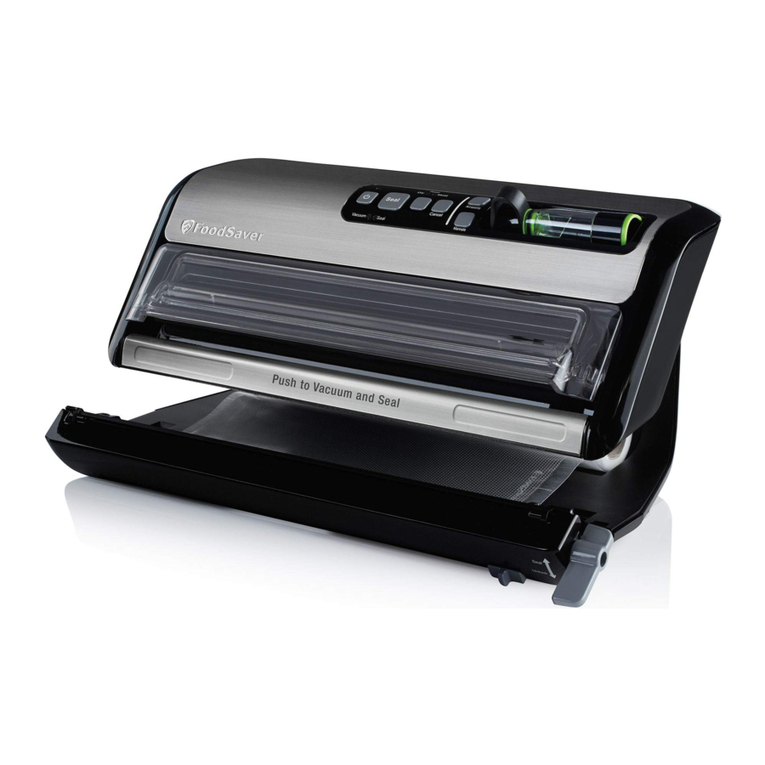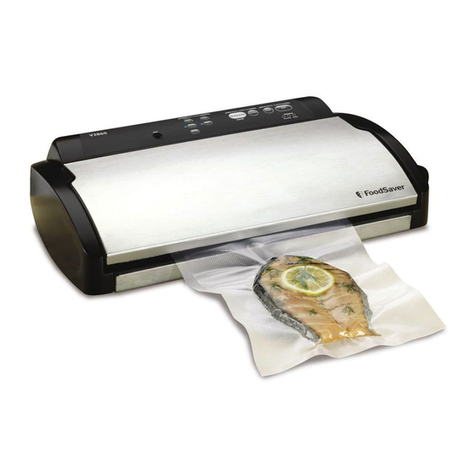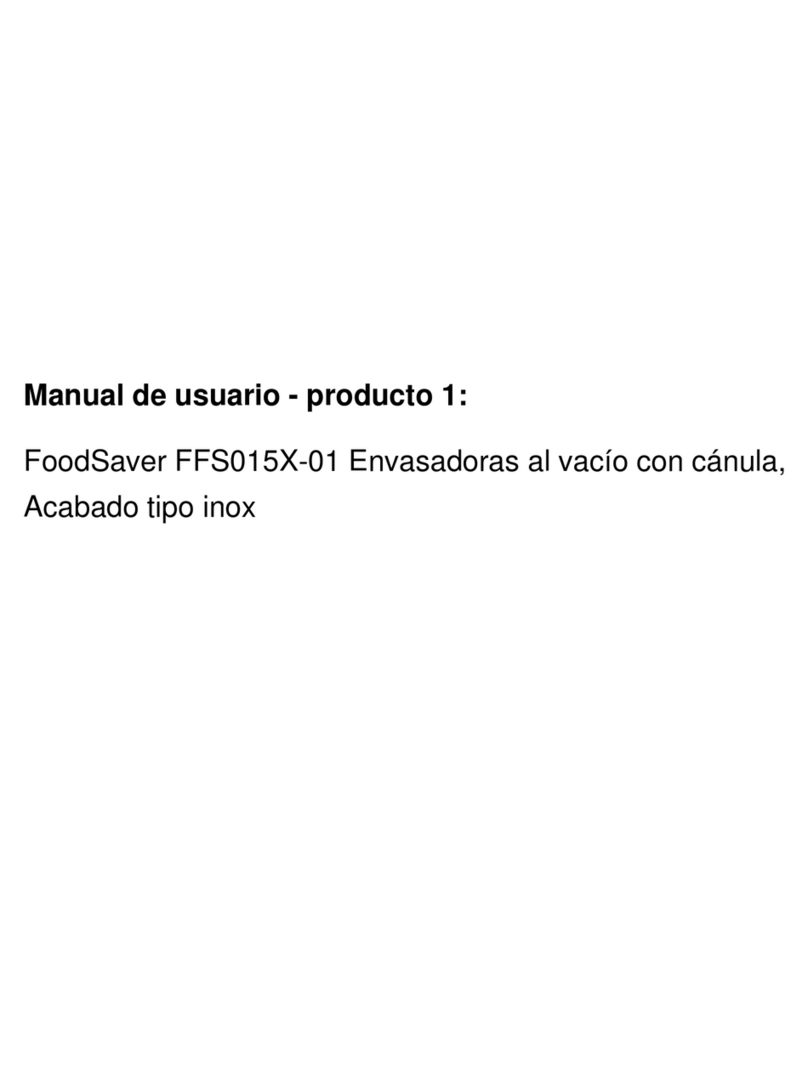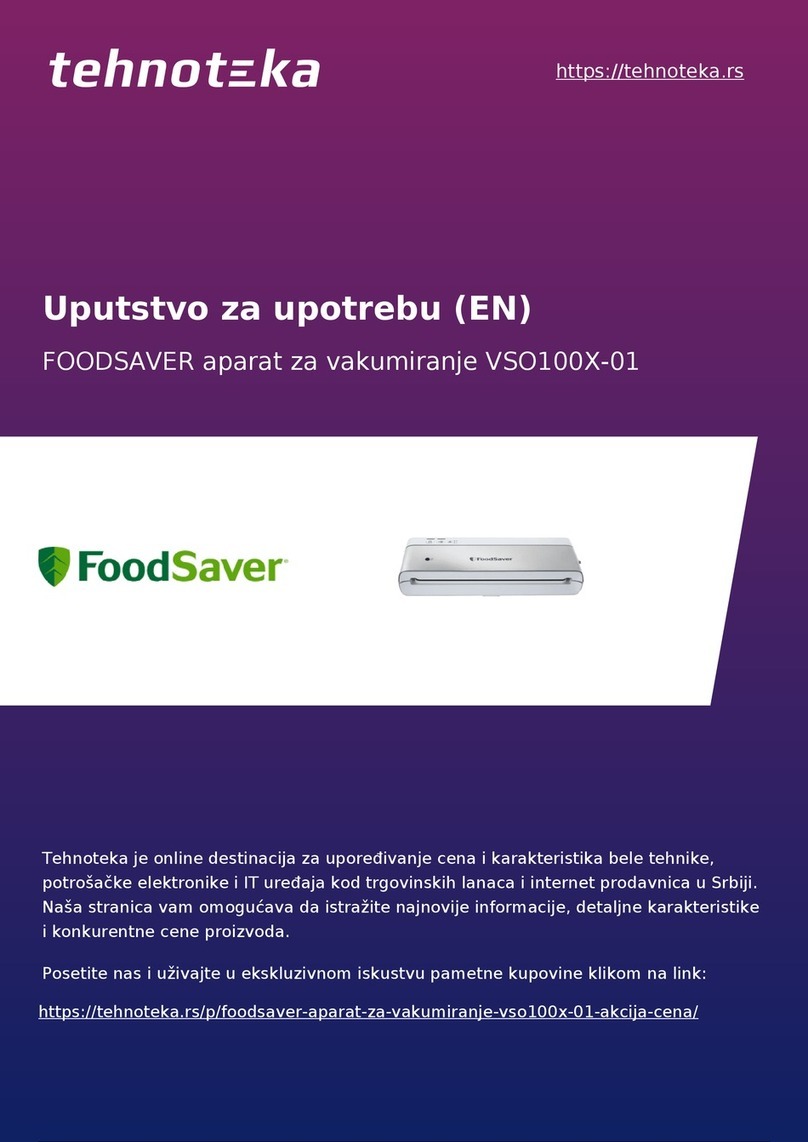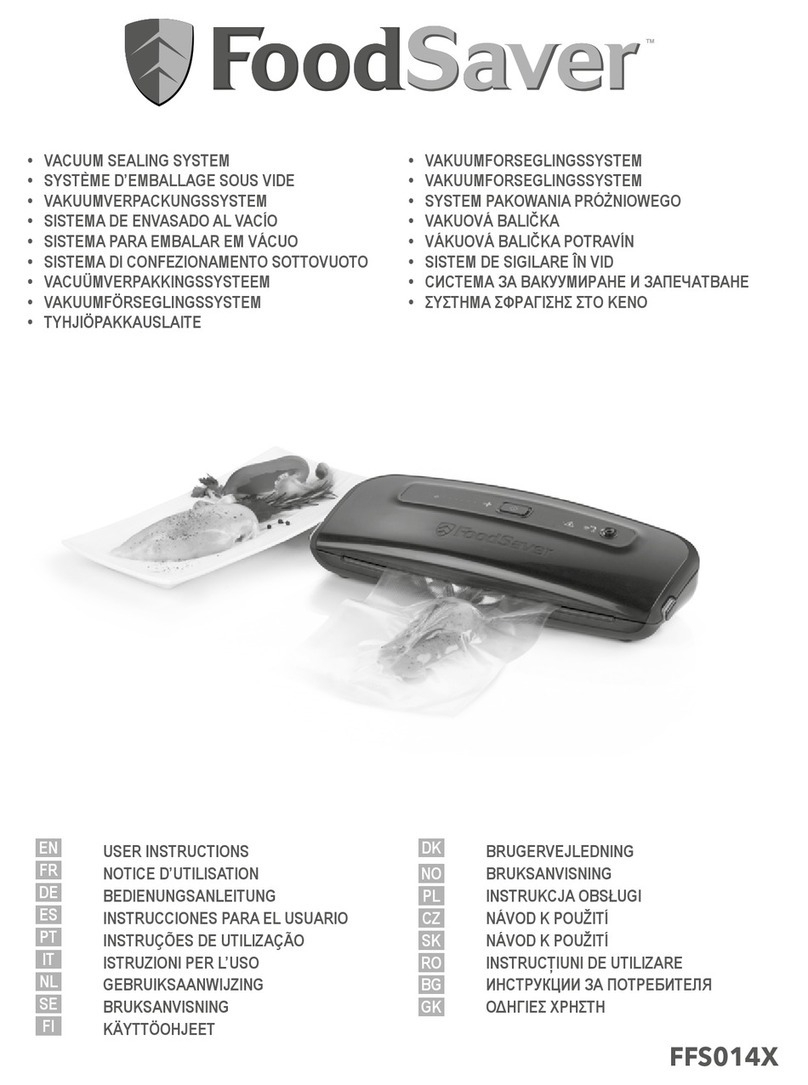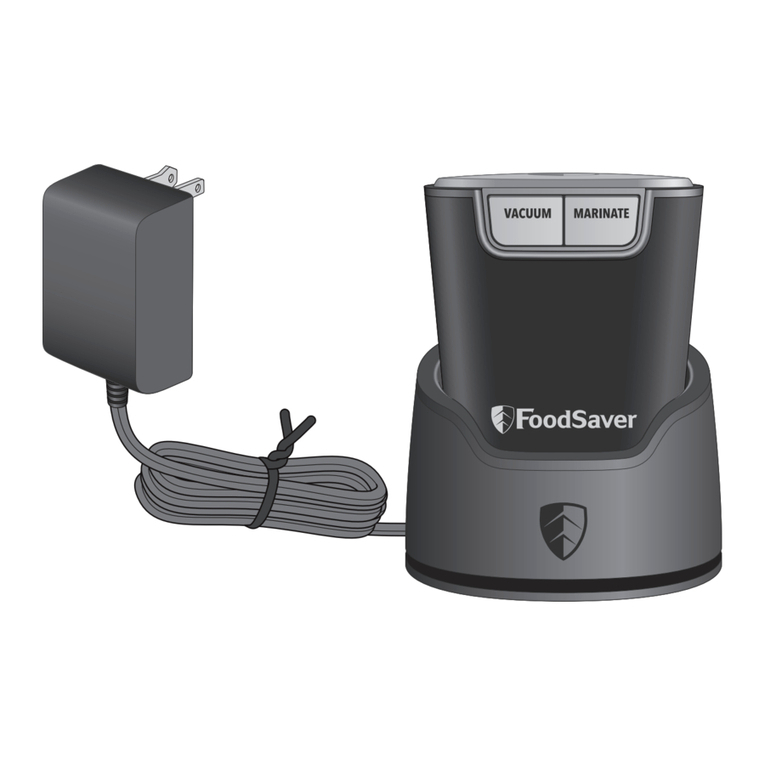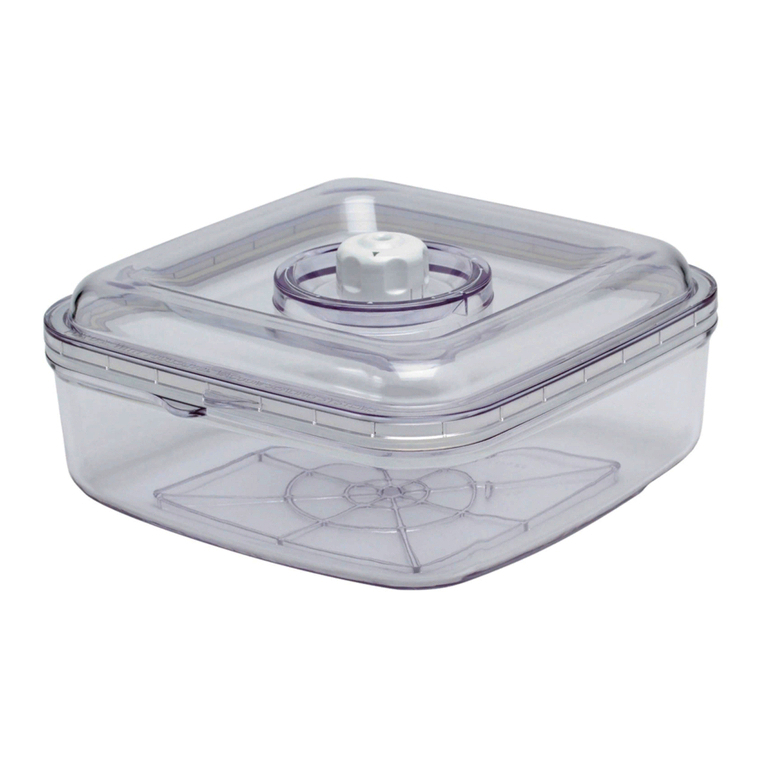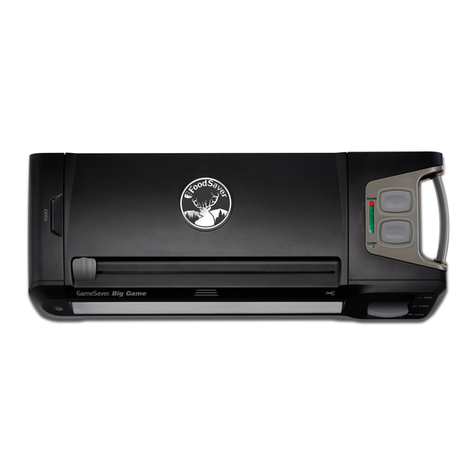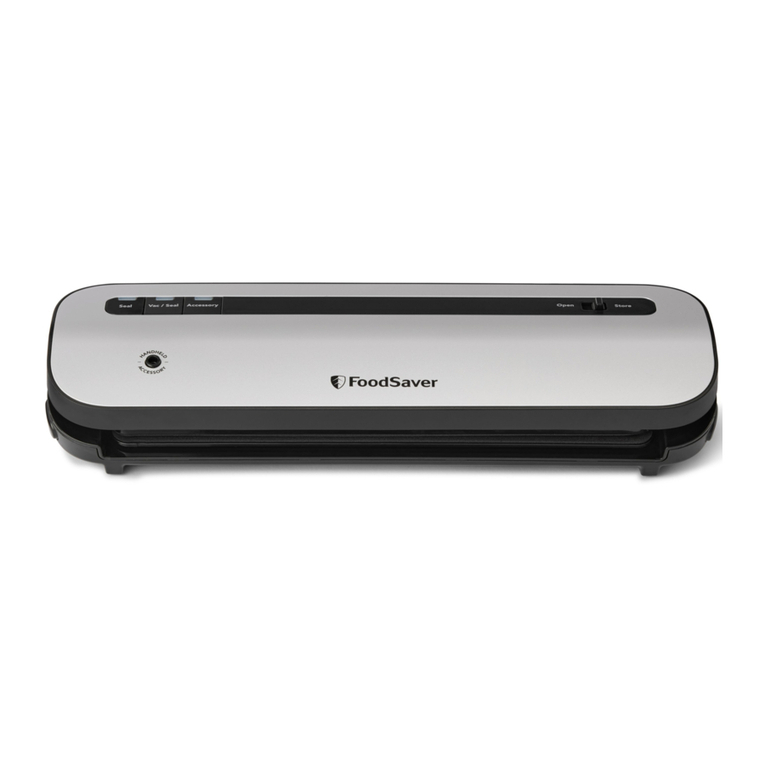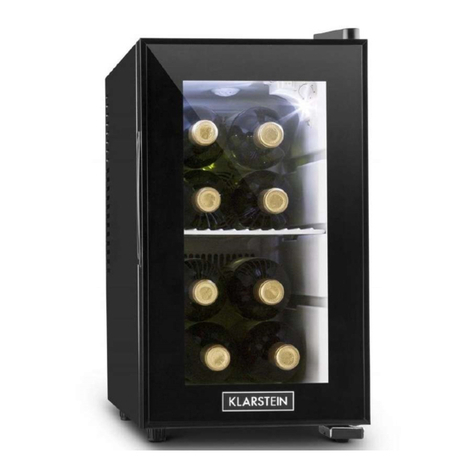
-7--8-
Guidelines for Vacuum
Packaging
Vacuum Packaging & Food Safety
The vacuum packaging process extends the life of
foods by removing most of the air from sealed zipper
bags and containers, thereby reducing oxidation, which
affects nutritional value, avor and overall quality.
Removing air can also inhibit growth of
microorganisms, which can cause problems under
certain conditions:
Mold – Easily identied by its fuzzy characteristic.
Mold cannot grow in a low oxygen environment,
therefore vacuum packaging can slow the growth of
mold.
Yeast – Results in fermentation, which can be
identied by smell and taste. Yeast needs water, sugar
and a moderate temperature to grow. It can also survive
with or without air. Slowing the growth of yeast requires
refrigeration, while freezing stops it completely.
Bacteria – Results in an unpleasant odor,
discoloration and/or soft or slimy texture. Under the
right conditions, Clostridium botulinum (the organism
that causes Botulism) can grow without air and
sometimes cannot be detected by smell or taste.
Although it is extremely rare, it can be very dangerous.
To preserve foods safely, it is critical that you maintain
low temperatures.
Vacuum packaging is NOT a substitute for refrigeration
or freezing and it cannot reverse the deterioration of
foods. It can only slow down the changes in quality. It is
difficult to predict how long foods will retain their
top-quality avor, appearance or texture because it
depends on age and condition of the food on the day it
was vacuumed packaged.
Food Safety Warning
Use fresh, perishable foods soon after purchase. Even
under proper storage conditions, foods lose freshness
and nutritive value if they are stored too long.
Food Preparation Tips
Hard Cheeses:
To keep cheese fresh, vacuum package it after each
use.
IMPORTANT: Soft cheeses should never be
vacuum packaged.
Baked Goods:
To vacuum package soft or airy baked goods, we
recommend using a FoodSaver®Container so they will
hold their shape.
Instructions
Charging Your Handheld Vacuum
Appliance: Before using the appliance for the rst
time please charge it for at least 24 hours. Failure to
do so will reduce the product’s battery life. Charging
Indicator Light remains illuminated when appliance is
plugged in and does not indicated charge level.
Note: Unit should be charged for 24 hours every 6
months to maintain battery life.
IMPORTANT: Should liquid be collected in the
reservoir, stop vacuuming and remove the reservoir to
empty and clean it.
Sealing FoodSaver®Vacuum Zipper
Bags
Step 1
Fill and Seal Bag
Place food in FoodSaver®Zipper Bag. Lay Zipper Bag
at with gray circle facing upwards and slide ngers
across zipper to close bag.
Step 2
Remove Air from Bag
Press Handheld Vacuum Sealer over grey circle on bag
and press the vacuum button until air is removed from
bag. Release the button to stop vacuum.
Step 3
Store
Place bag with food into refrigerator or cupboard.
VS1199 Series_19EM2 (UK).indd 7-8 4/8/19 10:47 AM

